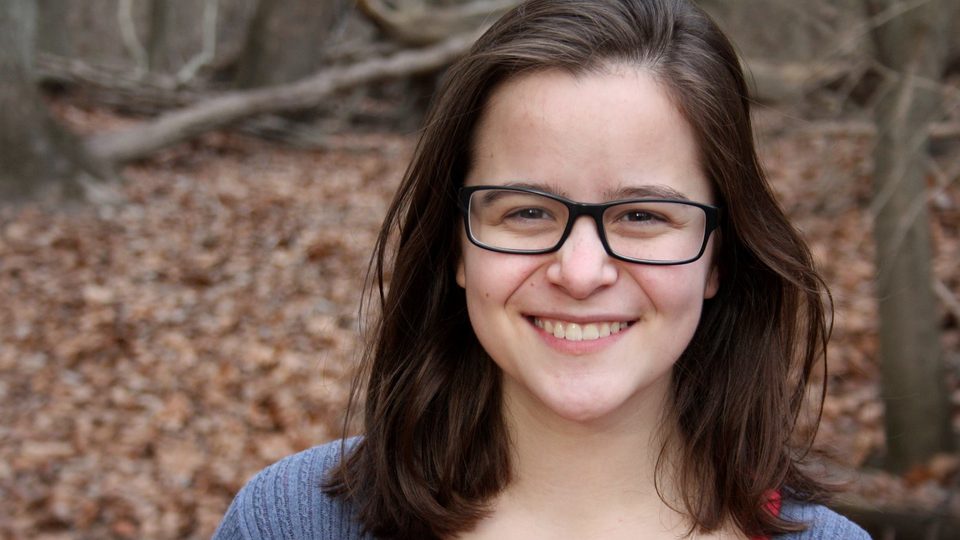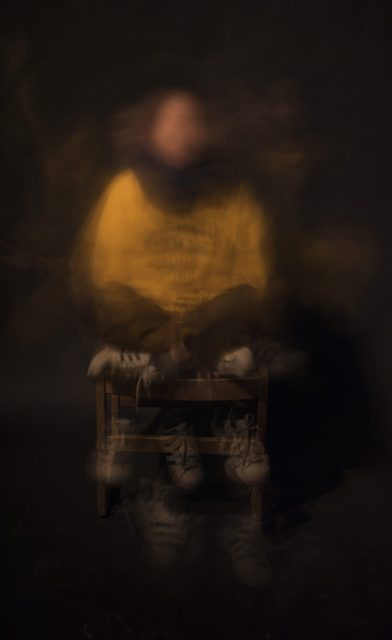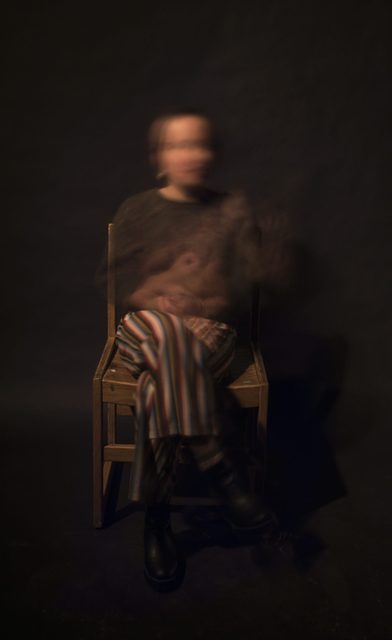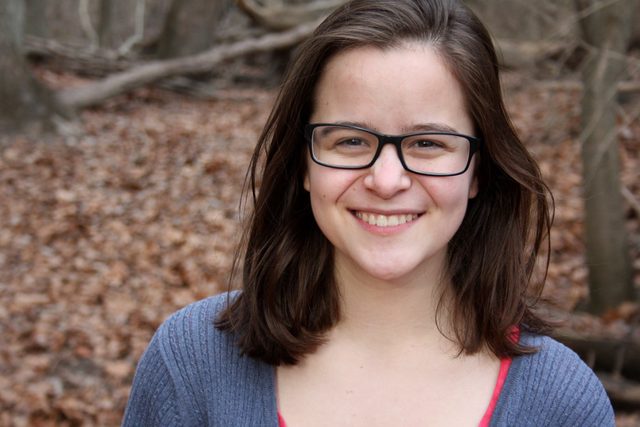Comps Insider: Amanda Zeilinger ’19
Amanda Zeilinger ’19, a studio art and art history double major from Shaker Heights, Ohio, tells us about her senior capstone experience, or ‘Comps,’ in support of her studio art degree.

What is the title of your Comps?
Closeness Generator
What is your Comps topic?
In a nutshell, my project is a photographic exploration of how to show the passage of time in a single still image. I asked 36 willing members of the Carleton community one question (with each person answering a different question) and made long-exposure photographs of them for the whole time that they were responding. As I was photographing them, I was also recording the audio of their responses. After I edited the photographs and transcribed their responses (which I left unedited and uncensored), I hand-bound a book, called Closeness Generator.
Each spread in the book shows the long-exposure portrait on the left, and on the right is the transcribed response from the interview. Because the portraits are long-exposure photographs, each portrait is a compilation of all the body language that person used while answering their question. In this way the viewer can see in one image all the movements the participant used during this time, all of their emotion and passion or reservations, and then read their response to see how their language impacts their body language.
Why did you choose your Comps topic?
The easiest part of the studio arts Comps for me was deciding what medium to explore. Since freshman year, photography is the medium I kept coming back to and felt confident exploring, and for my Comps I wanted to try something new that might fall within that medium. The 36 questions I used in the interviews I actually first found in a New York Times article called “The 36 Questions that Lead to Love” by Daniel Jones. The idea is that after answering these questions one-on-one with a partner, you will fall in love with (or feel incredibly close to) them.
I’ve been drawn to these questions and the idea that anyone can feel close to anyone if they know the other person’s story, and the limit of 36 questions provided some much-needed structure for my Comps. The past year was particularly tough for a number of personal reasons and I was looking to work on a project that would make me feel more connected to people I was passing by every day. By making a book that people can engage with, I hope that readers can experience this closeness to strangers, too.
What was the most interesting article or piece of information that you found while researching your Comps?
The “36 questions that lead to love” actually come from a psychological study conducted by Arthur Aron and others called “The Experimental Generation of Interpersonal Closeness: A Procedure and Some Preliminary Findings.” The purpose of the study was to determine if forced vulnerability between two individuals could generate closeness.
The research team compiled a list of 36 questions (some of which I had to edit to fit the format of an interview rather than a one-on-one exchange) that, when strangers went through together, did increase the empathy they felt towards each other and generated closeness.
What was your Comps process like?
This project involved so much more planning and logistics and time than I was expecting. At the beginning of the trimester I sent out an email to about 360 members of the Carleton community. These were people I had had one conversation with, people I felt incredibly close to, people I loved or had conflict with, and everyone in between. I asked if they would be willing to participate and to those who responded “yes!”
I then sent a survey asking which of the 36 questions they would feel comfortable answering. For this project it was necessary that the participants felt comfortable answering these questions honestly, and in order to not catch anyone off-guard or ask potentially triggering questions, it was important to figure out first who would be answering each question. I wanted to choose people as randomly as possible so that I was unbiased (because who am I to favor one person’s story over another?) so I used a random number generator to select who would be answering each question.
Then it was a matter of scheduling 36 personal photo shoots over the course of a couple weeks, learning how to bind a book, transcribing hours of audio, figuring out the layout of the physical book, determining what kind of paper to print on (which is surprisingly time consuming, it turns out), and finally days spent printing and binding the book.
Why do you think it was valuable for you to write a Comps?
The studio arts Comps process allowed me to try new things (like creating long-exposure portraits and binding an original photo book) that I otherwise might not have felt supported to pursue. The critiques with other arts majors, faculty, and visiting artists was truly invaluable in shaping and guiding this experience.
Will you expand on your Comps in any way?
Yes! I don’t know how exactly yet, but I definitely want to continue making long-exposure portraits of people as they tell stories, and creating books as the vehicle for sharing those stories.
Link to your Comps if you want to share it!
The Senior Studio Art show opens in the Perlman Teaching Museum on May 10, 2019. Come see some amazing art by some amazing people.
Photos:
Question 1 is in response to the question, “Given the choice of anyone in the world, whom would you want as a dinner guest?”
Question 32 is in response to the question, “What, if anything, is too serious to be joked about?”


